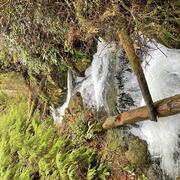Drought
USGS has a long and proven history delivering science and tools to help decision makers manage and mitigate the effects of drought, and we continue to improve data collection during and after drought events to gather critical, ephemeral information; synthesize datasets and models to better understand drought drivers, responses, and interactions; and deliver effective information to address drought through partnerships with stakeholders, policymakers, and the public.












